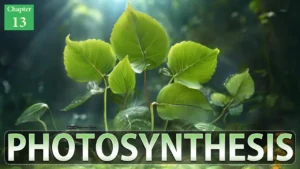Table of Contents
Frog Respiratory System Short Notes
In this article we will discuss about the frog respiratory system
Frog Respiratory System
- The process of gaseous exchange is called respiration
- The frog respiratory system help for respiration
- The frog respiratory system different in adult and larva
- Branchial respiration occurs in case of tadpoles by means of external gills
- Respiration in adult frog occurs through 3 different ways
- Cutaneous respiration: through moist surface of outer skin.
- Buccal respiration: through lining of bucco pharyngeal cavity.
- Pulmonary respiration: through lungs.
Cutaneous Respiration in Frog
- The respiration through skin is called cutaneous respiration
- The frog is under water or hibernating, it is the only mode of respiration
- The skin of frog is thin and has fine blood vessels
- Due the presence of mucous gland the skin of frog always remains moist
- During gaseous exchange the oxygen first dissolve moisture of body and then diffuse into the blood capillaries
- The carbon dioxide diffuses out from the blood into the environment
- Movement is not required in cutaneous respiration as skin remains exposed to air or water
Buccal Respiration in Frog
- Respiration done through the buccopharyngeal cavity then it is called buccopharyngeal respiration
- The floor of the buccal cavity is alternately raised and lowered
- The buccal cavity consists of moist mucous membrane and richly supplied with blood capillaries
- The air enters into the cavity through external nares and gaseous exchange takes place through the lining of buccal cavity
- The glottis closed during buccal respiration
Pulmonary Respiration in Frog
- The respiration through the lungs is called pulmonary respiration
- Frog respires by lungs when the need for oxygen is great
- Passage through which the air enters and leaves the lungs is termed as respiratory tract
- Respiratory tract consists of nostrils, buccopharynheal cavity, glottis, bronchi and lungs
- Nostrils: A pair of external and internal nostrils present
- Buccopharynheal cavity: the space between buccal cavity and pharynx
- Glottis: A slit like opening
- Bronchi: it is a pair of small tubes
- Lungs: pair of sacs. Numerous small air sacs are present in the lungs called alveoli. Alveoli help for gaseous exchange.
How Respiratory System Works In Frog?
- The inspiration and expiration of the air is done by the action of the buccal cavity
Inspiration
- The process of intake of air is called inspiration
- Now, the sternohyal muscles contract.
- The floor of buccal cavity is lowered
- Buccal cavity is enlarged and the air is drawn into the buccal cavity through the nostrils
- Now, the glottis opens and the closes the nostrils
- The pterohyal muscles contracts which raises the floor of buccal cavity
- By this mechanism the air passed into lungs
- In lungs, alveoli are filled with air and gaseous exchange takes place between blood and alveoli by diffusion.
Expiration
- The process of exhaling of CO2 is called expiration.
- The glottis closes when lungs are filled with air
- Soon, the glottis opens.
- The air in the lungs are driven out into the buccal cavity by lowering its floor
- The glottis closes when the buccal floor is raised again.
- Now, the air is expelled through the opened nostrils to outside.
Frequently Asked Questions: –
What is cutaneous respiration?
The respiration through skin is called cutaneous respiration. The frog is under water or hibernating, it is the only mode of respiration
What is buccal respiration?
Respiration done through the buccopharyngeal cavity then it is called buccopharyngeal respiration
You may also like: –
- Frog Morphology Short Notes
- Frog Digestive System Short Notes
- Frog Respiratory System Short Notes
- Frog Circulatory System Short Notes
- Frog Nervous System Short Notes
- Frog Urogenital System Short Notes
For more detailed information about Structural Organisation in Animals, download now full study material as PDF and if you want to learn more detailed information about Structural Organisation in Animals, visit YouTube Channel.



![[PPT] The living world Class 11 Notes](https://rajusbiology.com/wp-content/uploads/2024/06/PPT-The-living-world-Class-11-Notes-300x169.webp)
